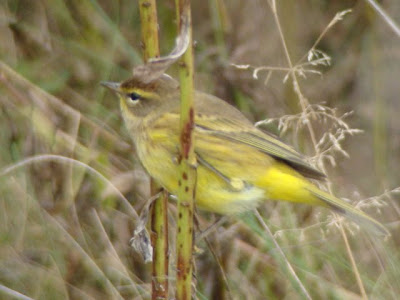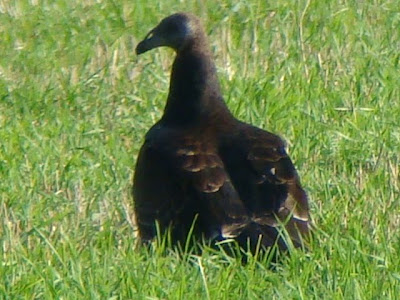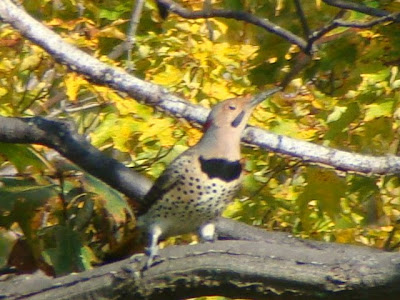
As I walked along, I flushed a couple of sparrows from the ground that flew up into the adjacent hedgerow. I noticed that one of the birds had a lot of white on the edge of the tail as it flew away. Once it perched and I was able to get a good look at it, I realized that it was a Vesper Sparrow.

The other one was also a Vesper Sparrow and perched a little further down the hedgerow. Quite a treat as this species of bird is getting harder and harder to find in our area. These birds are probably migrants, but with all the positive grassland habitat modification that is going on at the Coxsackie Grasslands, they may just nest there someday.

The bold eye-ring, buffy flanks and white edged tail give this sparrow a very unique look. It's a shame that not many nest in our area due to habitat loss.

Once I had stopped gawking at the 2 Vesper Sparrows in the hedgerow, I spotted 2 more of them on a nearby berm. I had all 4 of them in sight at one time and was reminded of a similar encounter that I had a few years ago in the town of Knox. It was also in October when I spotted a small flock of them migrating south.





























